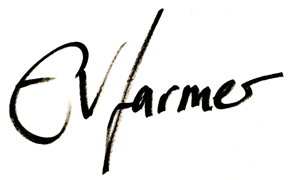 North Shore Hospital
Takapuna, Auckland 0622
Private Bag 93-503, Takapuna
North Shore City 0740
Telephone: (09) 486 8900
Freephone 0800 80 93 42
North Shore Hospital
Takapuna, Auckland 0622
Private Bag 93-503, Takapuna
North Shore City 0740
Telephone: (09) 486 8900
Freephone 0800 80 93 42
22 April 2022
Dr Susan Calvert
Tumu Whakahaere me te Pouroki: Chief Executive and Registrar
Te Tatau o te Whare Kahu | Midwifery Council
By email:
[email address]
Kia ora Sue,
Re: Scope of Practice feedback
Please accept this feedback on behalf of Waitematā DHB
In preparing this feedback the Waitematā DHB Maternity Services has considered the aspirations of
the Council for a broader and more comprehensive scope, and we see considerable merit in this
approach.
We are very supportive of the proposal to align the scope with Te Tiriti o Waitangi, and the desire to
pursue more equitable and culturally safe midwifery care.
We view the draft scope as an enabling document that significantly expands the role of the midwife
in Aotearoa. We would like to draw the attention of council to some possibly unforeseen and
unintended consequences of the proposed scope and the impact this may have on midwifery in
Aotearoa, and as a result on public safety.
1. Whilst possibly not intended, expanding the scope to include all sexual health, all infant
health (up to two years of age), and all whānau health significantly expands the role of the
midwife and will inevitably see midwives working exclusively in these new fields. This may
inadvertently disperse the workforce over a much wider number of roles and will inevitably
lead to fewer midwives being available for pregnancy, labour, and immediate postnatal
care, which has been the unique domain of a midwife. Resulting in an increased risk to
public safety.
2. Expanding the scope to include al sexual health, all infant health, and all whānau health
significantly expands the role of the midwife resulting in a much larger knowledge and skills
base required to qualify for registration. This assumes these are core competencies and not
part of an expanded scope. The impact of this is either to expand the undergraduate
programme to cover the new knowledge and skills resulting in a significantly longer
undergraduate programme acting as a barrier to enrolment, or to accepting that midwives
wil be under-qualified at the point of registration with a consequent risk to public safety.
3. The time parameters of the role (pregnancy through to six weeks postpartum) are historical
and based on the 40 day lying-in period seen over many cultures worldwide. Laying claim to
this unique period of time enables women to receive midwifery specific care in this period.

Leaving this period open enables other workforces to capture postnatal care under their
scope. Expanding beyond these parameters also exposes employed midwives to
redeployment into non-maternity wards to fill nursing shortages, contributing to staff
disenfranchisement and attrition.
4. Lack of clarity around what care can be provided on the midwife’s sole responsibility and
what can be provided as part of a wider health care team. This potentially creates problems
when practitioners step outside the intention of the scope and deliver care they are not
qualified to provide, for example prescribing anti-hypertensives, or treating asthma.
Similarly it may also give the impression that care is only delivered as part of a wider health
care team as exists with nursing (the nurse practitioner scope is separate for this reason).
5. The scope makes no mention of locations of care. In the past this has protected the right of
midwives to provide homebirth, and while this protection may not stil be needed, would it
be problematic to include this, just to be on the safe side?
6. The use of the word whānau to replace the words women and pregnant people was not
wel understood and is likely to be open to confusion. Whilst we understand that the CRG
had a high level of comfort with this term to be a generic term for pregnant people and
their significant others, the word whānau has a much wider use in Aotearoa and is
therefore likely to be open to significant misinterpretation. The scope of practice as a
document needs to be simple and use terminology wel understood by the profession and
also by the general public. Inevitably this confusion will lead to a legal challenge at some
point in the future.
The scope could be written as fol ows without changing the intent:
Te Tiriti o Waitangi is embedded in the practice of a kahu pōkai / midwife in Aotearoa New Zealand.
The kahu pōkai / midwife provides culturally and clinically safe care, drawing upon evidence to
enable whānau*sexual and reproductive health, preconceptual, pregnancy, birthing, postnatal and
infant health and wel being within the wahine journey from preconception to 6 weeks postpartum
on their own responsibility and in any context including home.
*For the purposes of this document whānau is a term used to describe wāhine, pregnant people, their infants and their
significant others
The Council may also wish to consider adding sexual health, infant health, and whānau health as an
extended scope with accompanying credentialing programme for those that wish to do this as
occurs with other workforces.
Nga mihi
Emma Farmer RN RM MHSc
Director of Midwifery
Child, Women and Family Service I Waitematā DHB
Mobile 021 220 7344 I Email [email address]
Everyone Matters | With Compassion | Better, Best, Brilliant | Connected

